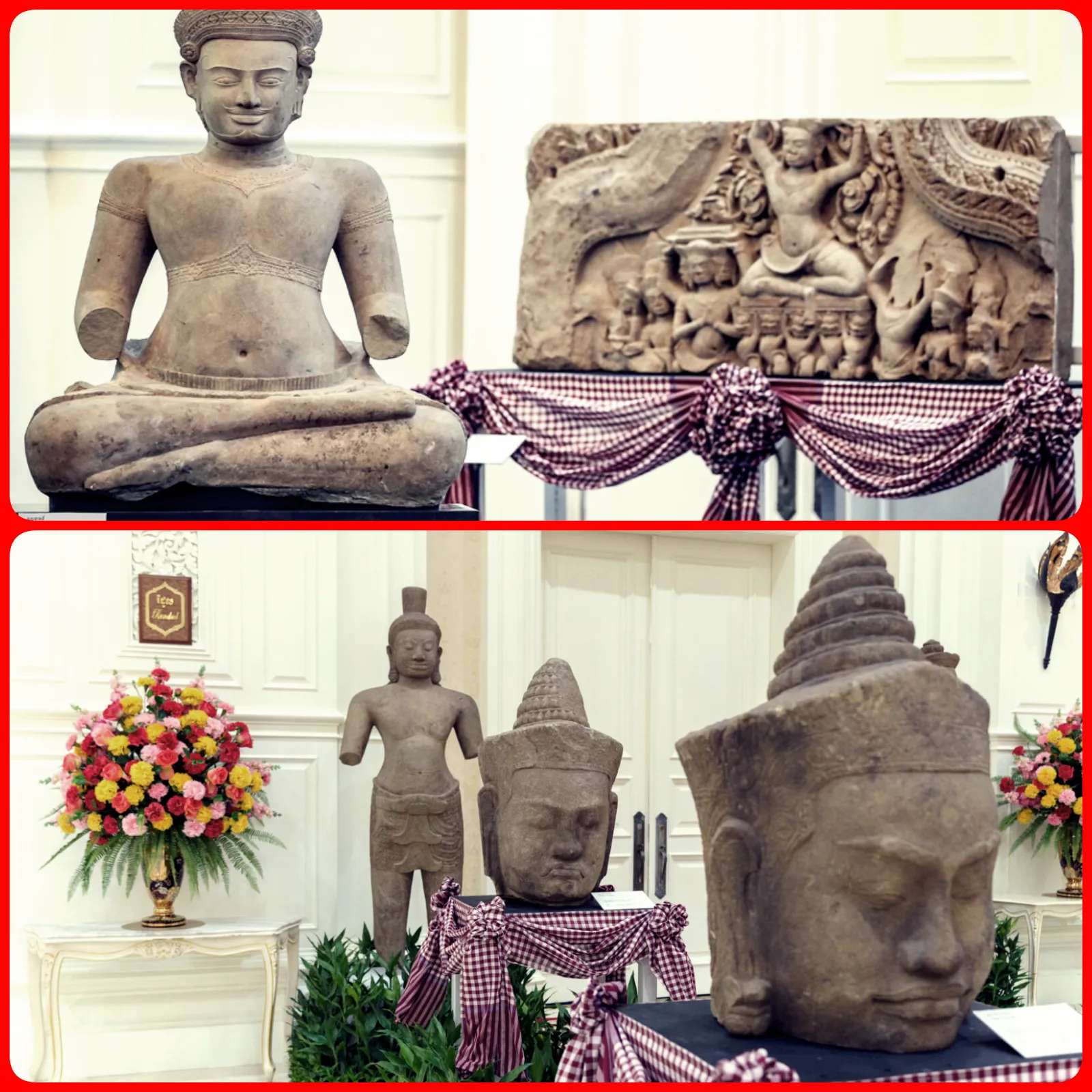
Historic Hindu and Buddhist Artifacts Make Their Way Back to Cambodia After Decades of Struggle
Cambodia is rejoicing as it welcomes the return of 70 invaluable artifacts, including masterpieces from the Hindu and Buddhist traditions dating back to the 9th through 14th centuries. This significant repatriation includes revered stone statues such as a mythical warrior from the Mahabharata, figures of Shiva and Parvati, and the Ardhanarishvara statue from the ancient Koh Ker capital. These items have been returned from various sources, including the Metropolitan Museum of Art in New York, private collectors, and the Lindemann family, through voluntary returns, negotiations, and legal proceedings, according to Cambodia’s Ministry of Culture and Fine Arts.
Prime Minister Hun Manet expressed that the return of these statues symbolically reconnects the Cambodian people with their ancestral heritage. The artifacts are now on display at the Peace Palace, the country’s government headquarters. Many of these pieces were looted during Cambodia’s tumultuous period under the Khmer Rouge regime in the 1970s. Notably, the artifacts from the New York museum were trafficked by Douglas Latchford, a notorious art dealer indicted in 2019 for allegedly orchestrating a scheme to sell looted Cambodian antiquities. Although Latchford denied any wrongdoing, he passed away the following year.

The U.S. Embassy in Cambodia highlighted its role in facilitating the return of over 150 antiquities, including significant items like the Hindu elephant god Ganesh and the 10th-century “Skanda on a Peacock,” which are now displayed at the National Museum of Cambodia in Phnom Penh. Bridgette Walker, the embassy’s Chargé d’Affaires, attended the repatriation ceremony and affirmed the U.S. commitment to protecting Cambodia’s cultural heritage. “Returning looted artifacts to their rightful home is the right thing to do,” she stated.
Since 1996, Cambodia has seen the return of 1,098 artifacts—571 from private collections and 527 from foreign institutions and governments. This repatriation effort reflects a broader trend of countries reclaiming their cultural treasures from turmoil-stricken areas like Syria, Iraq, and Nazi-occupied Europe.
Despite occasional tensions over political and human rights issues, the successful return of these artifacts underscores a shared commitment to preserving and honoring global cultural heritage.




